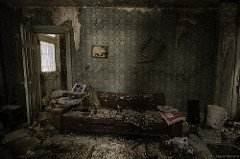The Quilt of Belonging, excerpted from Laura's work in progress
I've been absent from this blog for a while, but that doesn't mean I haven't been writing. Occasionally, I have nothing to bring to my weekly critique group, but knowing I'll see my dear writer friends on Monday evening is usually enough to motivate me to pull something together. If you write and don't belong to a critique group, I think you should give one a try.
My main project right now will, I believe, be in workbook format and center on self-healing. The idea came to me in response to the number of people who have read one or both of my memoirs, Reversible Skirt and Resilient Ruin, and asked how I could be so normal after the start I had in life. I realized it might be helpful to others if I shared some of my recovery process.
Right now the work is very much centered on the healing power of stories. One wonderful thing about creative endeavors is that you discover things about yourself or clarify aspects that had previously been a little fuzzy. Before starting this, I didn't realize in quite the same way how important stories have been to my healing journey.I'm going to share one chapter from this work in progress. The chapter is titled "The Quilt of Belonging"; the book's working title is The Heartbreak Healer. I don't know yet how many chapters there will be. I envision including illustrations in line drawing format so people who find coloring soothing can use them for that purpose. I'd love to know what you think of this and whether you are inclined to do the suggested exercises that follow the story:
The Quilt of Belonging
By Laura McHale Holland
Abraham Lincoln was a big deal in Illinois, the state where I was born and raised. License plates were labeled with “Land of Lincoln”; his birthday, February 12, was a statewide holiday; and my grammar school’s little library was stocked with books about Lincoln’s life.One thing that captured my heart was the loving bond he shared with his stepmom, Sarah. He called his birth mother, who died when he was nine, his “angel” mother and called Sarah his mother. Sarah was nothing like the wicked stepmothers depicted in the popular Cinderella and Snow White tales and not at all like my stepmother, who was, unfortunately, akin to the fairy tale stereotype. The story of Abe and Sarah Lincoln gave me my first inkling that stepmothers can be positive forces in their stepchildren’s lives.
I do not know what kind of parent my mother would have been had she lived. I only know that when I became a mother and stepmother, I had no solid, loving experiences to fall back on, no memories of how to do it right, no positive role models to follow. I was mothering on the fly. The Quilt of Belonging, the story featured in this chapter, recounts one of my own experiences as a young mother finding her way:
~~~
When my daughter was small, she went to a co-op nursery school. That meant for three years, I went to nursery school too.
Most of the other mothers loved to linger in the school’s kitchen. Long after their kids were climbing ropes and squishing bright-colored Play-Doh through stubby fingers, they sipped coffee and shared pithy tidbits from their lives. How I envied the easy way those kitchen moms sat in their chairs, bending down to wipe sticky faces as the little ones dashed by in oversize dress-up clothes, a blur of lace, Velcro and sequins. Their conversations grew like weeds as they commiserated about things their own mothers had done. I listened tongue-tied, for I had no endearing mother memories or wisdom to share.
Twice a month, the school held mandatory parent meetings. One night, we each had to bring in a favorite dish from childhood, one that our mother used to cook. Well, my mother didn’t raise me, and my stepmother burned everything thoroughly before she put it on the table. I pondered, What'll it be? Chicken baked so long you bent your fork trying to get it off the pan? Hamburgers disguised as charcoal briquettes? Deep, deep brown crispy pancakes? Black toast?
I settled on the toast. But as soon as I brought it in and saw the lovingly prepared cream puffs, chicken tetrazzini, triple chocolate layer cake, steaming latkes, grilled cheese, and more, I had serious misgivings.All around the table people eagerly shared the warm memories evoked by each dish. Finally, someone pointed to the toast and asked, "Who brought in the—what is that?"
"Burned toast," I fessed up. I then told the group about when I was twelve years old and spent the night at a friend’s house for the first time.
The next morning, the mom asked me, “How would you like some toast?”
I replied, “Toast? No! Ick! No! I hate toast!”
“Now, why would anyone hate toast?”
“It’s black and hard, and it sucks up all my spit when I bite into it.”
My friend’s mom shook her head and smiled. “Toast doesn’t have to be black, honey.”
I then told the group that realizing this fact about toast was a big moment in my childhood. I swear the meeting began to move in slow motion as everyone’s eyes bore into me. Then a few people smiled briefly, and those on either side of me edged away, turned their backs slightly and began conversations that erased my words from the room. I was relieved when the meeting finally drew to a close, until Nina, our director reminded us—"Quilt squares are due on Monday."
Oh no, the quilt. Raffling it was the school's main fundraiser, and every family had to contribute one square foot of fabric sewn into art. The theme was Homes Around the World, and I hadn't a clue what to do or how to do it. You should have seen the squares that were already done. There was an Irish country cottage, an enchanting tree house, a glittering Victorian. Day after day the squares rolled in, each one more stunning than those that preceded it.
On Friday when I was slicing apples for snack, Nina asked, "What are you going to do, Laura?"
The thing that flew into mind and stuck there like a wasp at a picnic table was the garishly decorated ranch house where I grew up.
“You must have something planned by now."
"Uh, I'm doing a 1960’s Midwestern living room."
I was committed. At home I sketched the tri-sectional foam rubber padded brocade corner couch; the cornices crammed with stuff—like a ceramic Siamese cat perched on a fake fish bowl, a transistor radio in the shape of a Chevrolet Impala; the reclining chair; the end table full of pills, pills, pills, pills, pills. I found materials to approximate all the clashing fabrics and textures in my memory, glued pieces to a muslin square, and a friend sewed it all down nice and tight.
On Monday, I brought my square to the school. Put it on the table. Everyone gathered around. Nina leaned in close and said, “This is really … nice!” And the others oohed and aahed in agreement because my funky childhood living room transformed into art actually looked good.
And it turns out mine wasn't the only Brand X abode. There was a New York City tenement; a homeless man leaning against a wall, a worn knapsack at his feet; a gaunt-eyed family peering from the windows of an old school bus. When finished, the quilt truly did represent homes around the world and people from all walks of life.
I can't say that chatting in the kitchen ever got easy for me, but when I saw just how well my zany square fit into that quilt, I thought maybe, just maybe I fit in too.
~~~
I think this story exemplifies that when it feels like people are judging you, they’re often just uncomfortable. Unfortunately, when your life as a child is atypical in a negative way, just talking about your day-to-day experiences causes people who haven’t encountered something similar to blanch. Figuring out when to reveal things and when to hide them is a challenge. And it’s easy to feel like you don’t belong anywhere.
The feelings associated with being out of place don’t go away when you grow up either. They surface regularly at inopportune times. But they are just feelings, and not necessarily a reflection of reality. I believe the truth is more complex and welcoming than I am predisposed, due to of my early isolation, to think. This story reminds me that when I’m feeling like a donkey at Churchill Downs, I can remember that some of the people whom I think are thoroughbreds are really donkeys, too.
~~~
Exercises
Do you recall a time in your childhood when you realized some parents were very different than yours? If so, what did you think about this at the time? How do you feel about it now?
If you are a parent, how did the way your parents treated you affect the way you treat your children? Did they give you a good foundation? Why or why not?
When reading this story, did you recall a time or times when you felt out of place? What was that experience like? How did you react?
Have you ever been in a group where you felt comfortable, but you could tell someone else didn’t? What, if anything, did you do? If you didn’t reach out, how does that feel now? How would you handle a similar situation today?
Have fears of feeling you don’t belong ever caused you to not do something you’d like to do? Please explain. Ask a trusted friend to help you face your fears and engage in this activity. Schedule a follow-up meeting for after you test the waters.
Photo credits:
Handmade book, Scrappy Annie
Living room in abandoned house, Freaktography
Colorful apartment building, John Spooner
San Francisco houses, Franco Folini
Man with shopping cart, Toby
Irish cottage, Maureen





